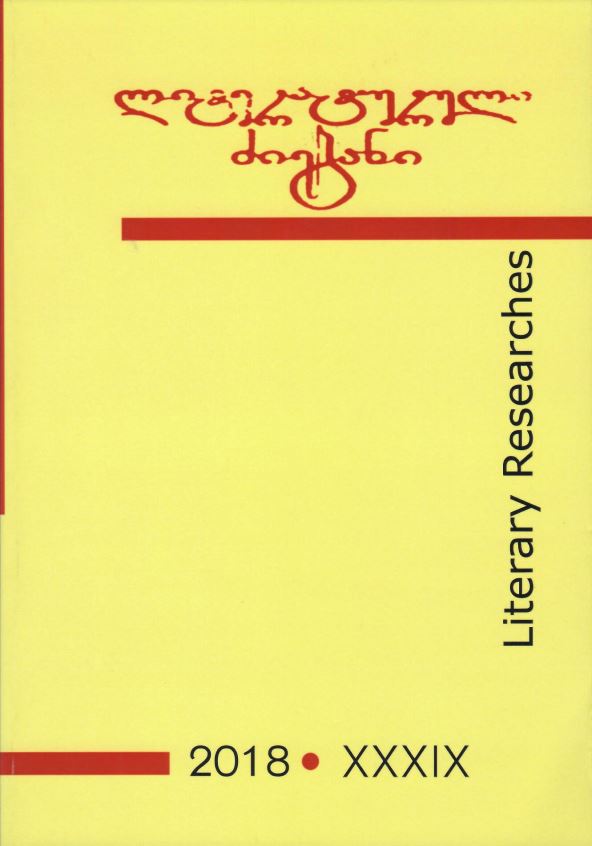Деконструкция мотива социальной утопии в художественной прозе Бориса Пильняка 1930-х годов
გამოქვეყნებული 2018-12-20
საკვანძო სიტყვები
- Revolution,
- Deconstruction,
- Social Utopia,
- Myth,
- Ritual
- Motive,
- Ideologeme ...More
როგორ უნდა ციტირება
ანოტაცია
For B. Pilnyak works, written in the 1930-ies, are the final period. Many researchers believe that it should be perceived as a time of crisis. The natural fact of artistic development was complicated by external circumstances. The only way for the author to tell his feelings in the 1930s was to create a dual artistic system. The phenomenon of dual literature is to be considered by taking into account its ambivalent nature. B. Pilnyak was not the only one who used the “dual-layer works” to send his message to the reader. This technique was also applied by other writers, such as B. Yasensky, I. Ilf and E. Petrov, L. Leonov.
Boris Pilnyak was one of the first to write a novel about the revolution (“Naked Year, 1922”).
He “changed his skin” quite early, and as well as his characters, the author gradually began to feel the incredible weight of this new skin. In this regard, it is necessary to pay special attention to the third period of Boris Pilnyak’s creative life. That is the same time that in his works there can be traced the destruction of the “social utopia” motif. Thus, the idea that the novel “Volga Flows into the Caspian Sea” was based on the preconceived notions of repentance and treason is to be reconsidered. Boris Pilnyak stayed authentic throughout his literary career. And this thesis should play a decisive role in the study of the creative heritage of the writer.
It’s just during the 1930-ies that the process of creating some “other reality” takes place in B.Pilnyak’s artistic world. The destruction of the “social Utopia” motive which began in his works in 1920-ies rises on the new level in the new social conditions. The 3d step in B.Pilnyak’s creativity based upon the principles of the “adaptive art” (the term was introduced by A. Zholkovsky) appears to be the result of the change in the cultural epochs (moving from myth to ideologeme, from game to ritual).
The writer’s path is largely the result of not only his individual, but also historical choice. Boris Pilnyak is an author in whose prose post-revolutionary Russia is shown as a fantastic country. He is a writer, with mythological thinking, initially far from any rationalism, alone, ready to oppose the whole system. Thus, the mystery of Boris Pilnyak-one of the most tragic artists of the era – has still not been solved, which means that the possibilities of creative research are truly limitless.

